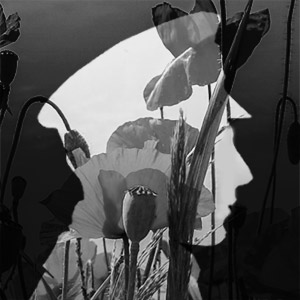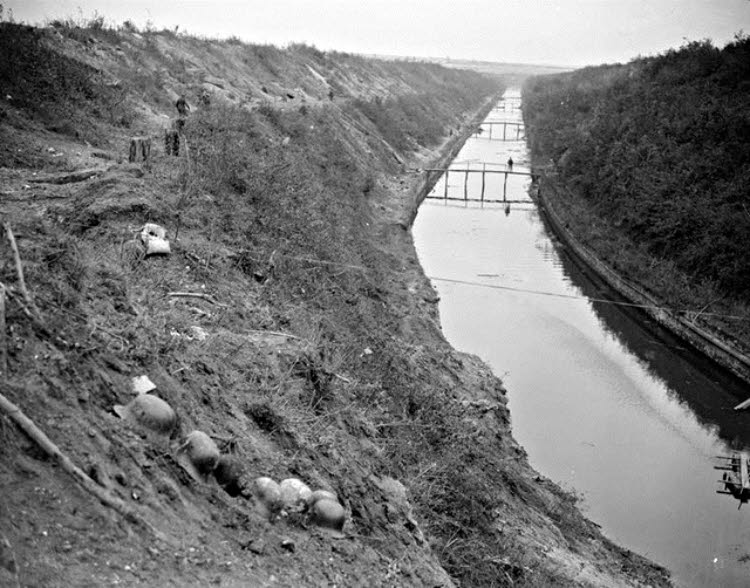
G/14733, The Buffs (East Kent Regiment), 6th Battalion
John William Couch was born in Ossett in early 1894, the second child and second son of four children born to Lincolnshire born Thomas Couch and his wife, Sarah (nee Stubbs) who married at Ossett Holy Trinity Church on the 3rd June 1893. By 1901, John William was living with his parents at Cloughton near Scarborough and in 1911 he was working there as a horseman for a local farmer.
It seems likely that the family continued to have an association with Ossett. John William’s cousin, Charles W. Couch, married Lydia Butterworth of Gawthorpe in 1910 and in 1911 the couple lived at 2, Zion Street, Gawthorpe.
John William appears not to have lived in Ossett for long but there is evidence he was born here and his parents married here in 1893. By 1901 the family had left Ossett.
His service record has not survived but it is known that he enlisted at Weaverthorpe, Yorkshire and at the time of his enlistment he was living at Cloughton. His Medal Card reveals that he served with three regiments: at first, in 1914 he served with the Army Service Corps as a wagoner/driver (service no. CHT/977 ) before transferring to the Durham Light infantry with service number 88937. Finally he joined the 6th Battalion Buffs (East Kent) Regiment with service number G/14733. He was killed in action on the 29th September 1918. At the time of his death his parents lived at Brookside, Whitby Road, Cloughton, Scarborough.
6th (Service) Battalion of the East Kent Regiment was formed at Canterbury in August 1914 as part of K1 under the command of 37th Brigade, 12th (Eastern) Division. They moved first to Colchester and Purfleet then in November 1914 to Shorncliffe and in February 1915 to Aldershot. In June 1915 they landed at Boulogne and on the 11th November 1918 at the end of WW1 they were located at Rumegies, east of Orchies, France.
He embarked for France as early as the 19th August 1914 and he was posthumously awarded the British and Victory Medals and, to recognise his service between 5th August and 22nd November 1914, he was awarded the 1914 Star.
He is remembered in this 2014 biography and Roll of Honour because the Commonwealth War Graves Commission and/or the U.K. Soldiers who Died in the Great War 1914-1918 listing records him as born or residing in Ossett.
Private John William Couch, son of Mr. and Mrs. T. Couch, of Brookside, Whitby Rd., Cloughton, Scarborough died aged 25 years on the 29th September 1918 at the Battle of the St. Quintin Canal.
On Sunday, 29th September, the 12th (Eastern) Division fought up through the formidable mass of enemy trenches in front of Ossus Wood before reaching the western outskirts of Vend’huile. This successful action gave the US Division, 46th (North) Midland and Australian Divisions to the right of the line of battle, the chance to break through the formidable fortifications of the Hindenburg Line on this most important day in the final offensive.
The 12th (Eastern) Division was now twenty-six miles from where the offensive had begun on the 8th August, and for that ground had lost 6,229 officers and men. The Division was withdrawn for rest in the areas of Savy, Acq and Aubigny, and left III Corps at this point. Private Couch was one of twelve other ranks deaths which occurred on Sunday 29 September 1918, during the advance towards the village of Vend’huile. The village had nearly been reached during the Battle of Cambrai in 1917. It was taken by the 27th and 30th American Divisions in September 1918, and eventually cleared by the 12th (Eastern) and 18th (Eastern) Divisions on 30 September 1918.
When reaching the western outskirts of Vend’huile, which in doing so had cost the 6th (Service) Battalion casualties, both casualties, both in loss of life and woundings, the officers and other ranks were not best pleased when they were attacked, and subjected to fire from an American tank. At no little risk to himself, Company Sergeant Major Smith ran to the American tank whilst it was firing on the British soldiers, and literally hammered on the hull of the tank with his rifle butt until the crew reacted to his presence, his actions doubtless reducing the battalion, and others ultimate casualty roll figures.

Above: Part of the St Quintin Canal, near Bellenglise, where a crossing was made by the 46th Division on the 29th September 1918.
Private John William Couch is remembered on Panel 3 at the Vis-en-Artois Memorial,1 Pas de Calais, France. Vis-en-Artois and Haucourt are villages on the straight main road from Arras to Cambrai about 10 kilometres south-east of Arras. The Memorial is the back drop to the Vis-en-Artois British Cemetery, which is west of Haucourt on the north side of the main road.
This Memorial bears the names of over 9,000 men who fell in the period from 8 August 1918 to the date of the Armistice in the Advance to Victory in Picardy and Artois, between the Somme and Loos, and who have no known grave. They belonged to the forces of Great Britain and Ireland and South Africa; the Canadian, Australian and New Zealand forces being commemorated on other memorials to the missing.
The Memorial consists of a screen wall in three parts. The middle part of the screen wall is concave and carries stone panels on which names are carved. It is 26 feet high flanked by pylons 70 feet high. The Stone of Remembrance stands exactly between the pylons and behind it, in the middle of the screen, is a group in relief representing St George and the Dragon. The flanking parts of the screen wall are also curved and carry stone panels carved with names. Each of them forms the back of a roofed colonnade; and at the far end of each is a small building.
References: